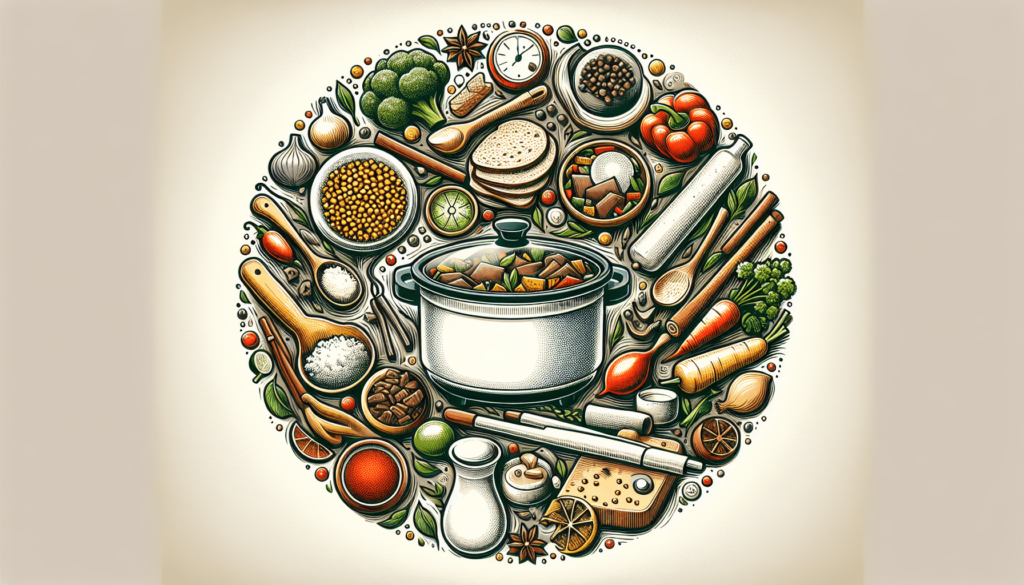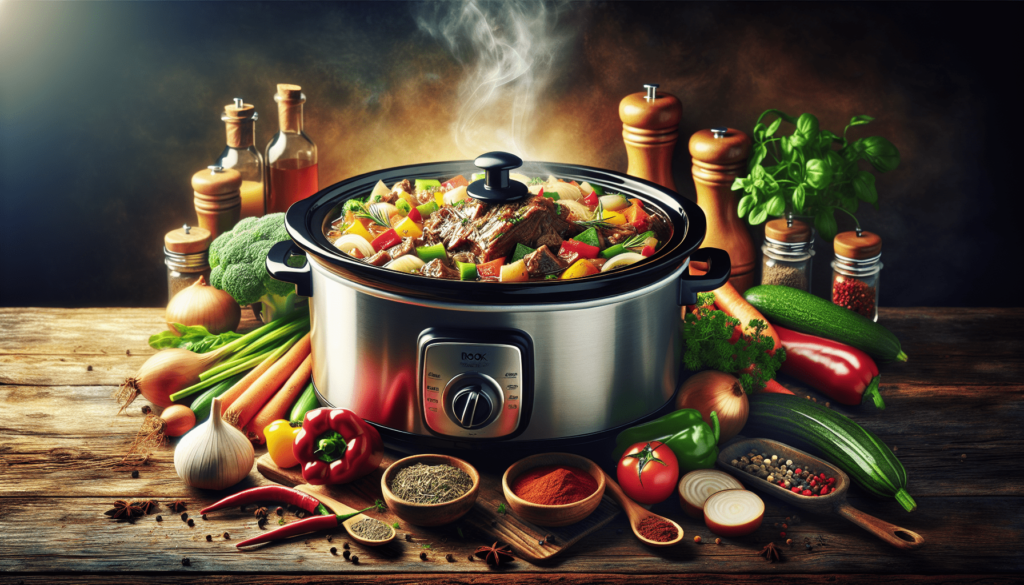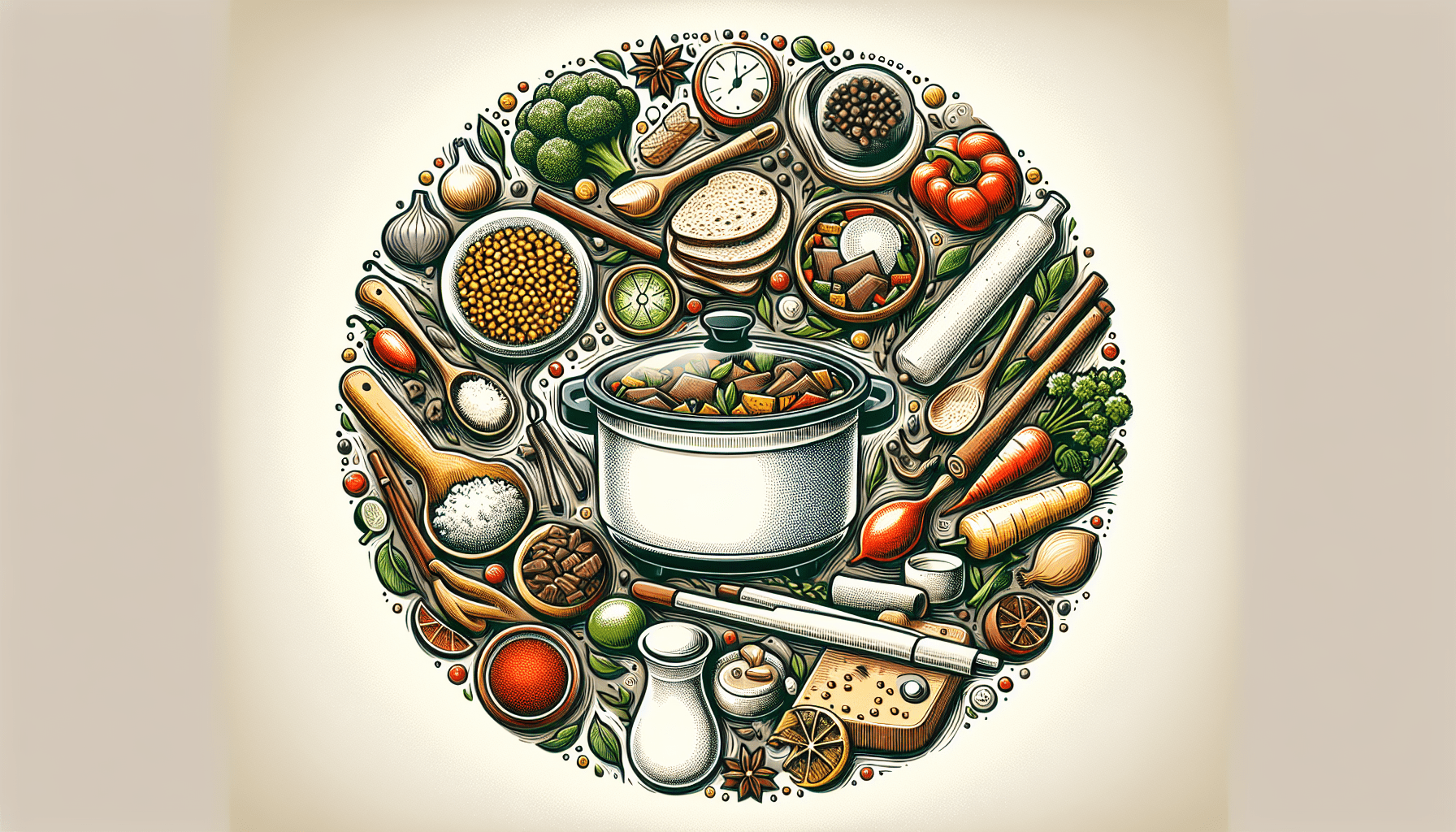Are you tired of spending hours in the kitchen, fussing over pots and pans, only to end up with a mediocre meal? Well, fret no more! In this article, we will uncover the secrets to achieving the best results from your slow cooker. Whether you’re a seasoned slow cooker enthusiast or just getting started, we’ve got you covered with tips and tricks that will transform your meals from average to extraordinary. So, grab your apron and let’s dive into the world of slow cooking perfection!

Selecting the Right Cut of Meat
When it comes to using a slow cooker, selecting the right cut of meat is crucial to achieving delicious and tender results. One important factor to consider is marbling. Marbling refers to the small streaks of fat within the meat, which add flavor and help keep the meat moist during the slow cooking process. Look for cuts that have a good amount of marbling, such as chuck roast or pork shoulder.
Another consideration is choosing tougher cuts of meat. Slow cooking is ideal for these cuts because the low and slow cooking method helps break down the tough fibers, resulting in tender and juicy meat. Some great options for slow cooking include beef brisket, short ribs, or lamb shanks. These cuts of meat benefit from the long cooking time and retain their flavor and texture.
Lastly, it’s important to trim excess fat from the meat before adding it to the slow cooker. While some fat is desirable for flavor, excess fat can lead to greasy and oily results. Trim any visible fat from the meat and leave just enough to enhance the flavor without overpowering the dish.
Preparing Ingredients
Properly preparing the ingredients before they go into the slow cooker can greatly impact the final result of your dish. One key aspect is cutting the ingredients into similar sizes. This ensures that they cook evenly, preventing some pieces from being overcooked while others remain undercooked. Aim for uniformity in the size of your ingredients, whether it’s veggies, meat, or grains.
When it comes to meats, taking the extra step to brown them before slow cooking can add depth of flavor to your dish. Browning the meat in a hot skillet enhances the Maillard reaction, resulting in a richer and more complex taste. It also adds a nice color and texture to the meat.
For beans and grains, it’s advisable to soak them before adding them to the slow cooker. Soaking helps to soften the beans and grains, reducing the cooking time and ensuring that they are properly cooked through. This step is especially important for dried beans to prevent them from staying hard and unappetizing.
Layering Ingredients Properly
Layering the ingredients in the slow cooker in the right order is essential to ensure even cooking and distribution of flavors. Start by placing root vegetables at the bottom of the slow cooker. Root vegetables such as potatoes, carrots, and onions take longer to cook than other ingredients, so placing them at the bottom ensures they receive enough heat and time to become tender.
On top of the root vegetables, add tender vegetables and herbs. These include leafy greens, bell peppers, mushrooms, and fresh herbs. By placing them on top, they will be exposed to the steam and retain their vibrant colors and flavors.
Lastly, it’s important to distribute liquids evenly throughout the slow cooker. This can be achieved by pouring the liquid, whether it’s broth, stock, or sauce, over the ingredients in a slow and steady manner. This ensures that all the components are well-coated and will cook properly.
Using the Right Liquid
Choosing the right liquid for your slow cooker recipes can enhance the overall flavor and moisture of your dish. One common choice is broth or stock. These liquids add depth and richness to the dish, providing a savory base for your ingredients. You can opt for chicken, beef, or vegetable broth depending on the type of recipe and flavors you’re aiming for.
In some recipes, using wine or beer can add a unique and complex flavor profile. When selecting a wine or beer, consider one that complements the other ingredients in the dish. For example, red wine works well with red meat, while white wine pairs nicely with poultry or seafood. Similarly, different styles of beer can enhance the flavors of recipes containing beef, pork, or even certain vegetables.
Whichever liquid you choose, make sure there is enough to cover the ingredients. This helps to prevent drying out and ensures that the flavors are evenly distributed throughout the dish. Add a bit more liquid if necessary, but be careful not to add too much as it can result in a watery final product.

Adjusting Cooking Time and Temperature
Following the recommended cooking time is vital in achieving the desired results from your slow cooker. Each recipe will have specific instructions for the cooking time, which takes into account the type and quantity of ingredients used. It’s important to follow these instructions closely to ensure that meats are fully cooked, vegetables are tender, and flavors have developed.
However, it’s worth mentioning that slow cooking on low for a longer period can sometimes yield even better results. This allows the flavors to meld together more deeply and the meat to become even more tender. If you have the time, consider opting for the longer cooking time as it can result in a more flavorful and succulent dish.
To ensure the meats are properly cooked, it’s helpful to use a digital thermometer to test for doneness. Different meats have different safe internal temperatures, so a thermometer can help you determine when your meat is cooked to perfection. This prevents overcooking or undercooking and helps you ensure food safety.
Minimizing Liquid Evaporation
To prevent excessive evaporation of liquid during the slow cooking process, it’s important to keep the lid on throughout the cooking time. The lid helps to trap the steam and moisture, creating a moist cooking environment that keeps your ingredients tender and flavorful. Resist the temptation to lift the lid frequently, as this can release valuable moisture and extend the cooking time.
Another tip is to avoid excessive stirring. While stirring occasionally is beneficial to distribute flavors and ensure even cooking, too much stirring can disrupt the slow cooking process and lead to liquid evaporation. Stir gently and only when necessary to maintain the integrity of your dish.
Choosing a slow cooker with a tight-fitting lid is also important to minimize liquid evaporation. A well-sealed lid will effectively trap the steam and moisture, ensuring that your dish retains its flavor and texture. If your slow cooker doesn’t have a tight-fitting lid, you can consider using aluminum foil to create a seal between the lid and the pot.
Adding Seasonings at the Right Time
Timing is key when it comes to adding seasonings to your slow cooker dishes. Delicate herbs such as parsley, cilantro, or basil should be added towards the end of the cooking time. This preserves their fresh flavors and prevents them from becoming dull or bitter from extended cooking.
It’s important not to oversalt your dish at the beginning. As the slow cooking process progresses, flavors concentrate and intensify. If you add too much salt at the beginning, you may end up with an overly salty dish. It’s better to season conservatively and adjust the seasoning towards the end of the cooking time when you can taste the dish and make any necessary adjustments.
Before serving your slow cooker creation, always taste and adjust the seasonings. This allows you to ensure that the flavors are well-balanced and to your liking. You can add more salt, pepper, herbs, or even spices if needed. Remember, it’s easier to add more seasonings than to fix an over-seasoned dish.
Avoiding Overcooking Vegetables
To avoid overcooked and mushy vegetables in your slow cooker dishes, there are a few strategies to follow. First, it’s recommended to cut the vegetables into larger pieces. This helps them retain their texture and prevents them from becoming too soft during the long cooking process.
For vegetables that cook more quickly, you can add them later in the cooking process. This ensures that they still retain some of their crunch and vibrant color. Examples of vegetables that cook quickly include bell peppers, zucchini, and sugar snap peas. Add them during the last 1-2 hours of cooking, depending on the recipe, to keep them crisp.
Stirring the vegetables occasionally throughout the cooking process can also help distribute the heat evenly and prevent them from overcooking in one area. However, be mindful not to over-stir, as this can lead to excessive liquid evaporation and result in a less flavorful dish.
Utilizing the Slow Cooker’s Settings
Slow cookers come with different settings, so it’s worth experimenting to find the one that works best for your recipe. Most slow cookers have high and low heat settings, allowing you to adjust the cooking temperature based on the dish you’re preparing. High heat is generally used for faster cooking or when you want to achieve a more caramelized exterior on meats. Low heat is ideal for longer cooking periods and for tenderizing tough cuts of meat.
Additionally, many slow cookers have a “keep warm” function. This setting is useful when your dish is finished cooking, but you’re not quite ready to serve it yet. By using the “keep warm” function, you can maintain a safe temperature for your food without it overcooking or losing moisture.
Some slow cookers may come with specific preheating instructions. If recommended by the manufacturer, it’s a good idea to preheat your slow cooker before adding your ingredients. This helps to bring the slow cooker up to temperature more quickly and ensures more even cooking throughout the dish.
Safety and Cleaning Tips
When using a slow cooker, it’s important to follow the manufacturer’s instructions for safe and proper use. Each slow cooker may have specific guidelines regarding cooking times, liquid levels, and maximum capacity. By adhering to these instructions, you can ensure the optimal performance and longevity of your slow cooker.
To prevent accidents, always place your slow cooker on a stable and heat-resistant surface. Avoid placing it near flammable materials or in a location where it can be easily knocked over. Additionally, never leave your slow cooker unattended while in use to minimize the risk of fire or other mishaps.
After each use, it’s essential to clean your slow cooker thoroughly to prevent bacterial growth and food contamination. Most slow cookers have removable crocks or inserts, making cleaning easier. Wash these components with warm, soapy water and dry them thoroughly before storing. The outer housing of the slow cooker can be wiped clean with a damp cloth.
In conclusion, getting the best results from a slow cooker involves careful ingredient selection, proper preparation, and utilizing the right techniques. By choosing the right cut of meat, preparing ingredients correctly, layering them properly, using the right liquid, adjusting cooking time and temperature, minimizing liquid evaporation, adding seasonings at the right time, avoiding overcooking vegetables, utilizing the slow cooker’s settings, and following safety and cleaning tips, you can create delicious and flavorful meals with your slow cooker. So gather your ingredients, follow these tips, and get ready to enjoy the convenience and tasty results that come with slow cooking.
